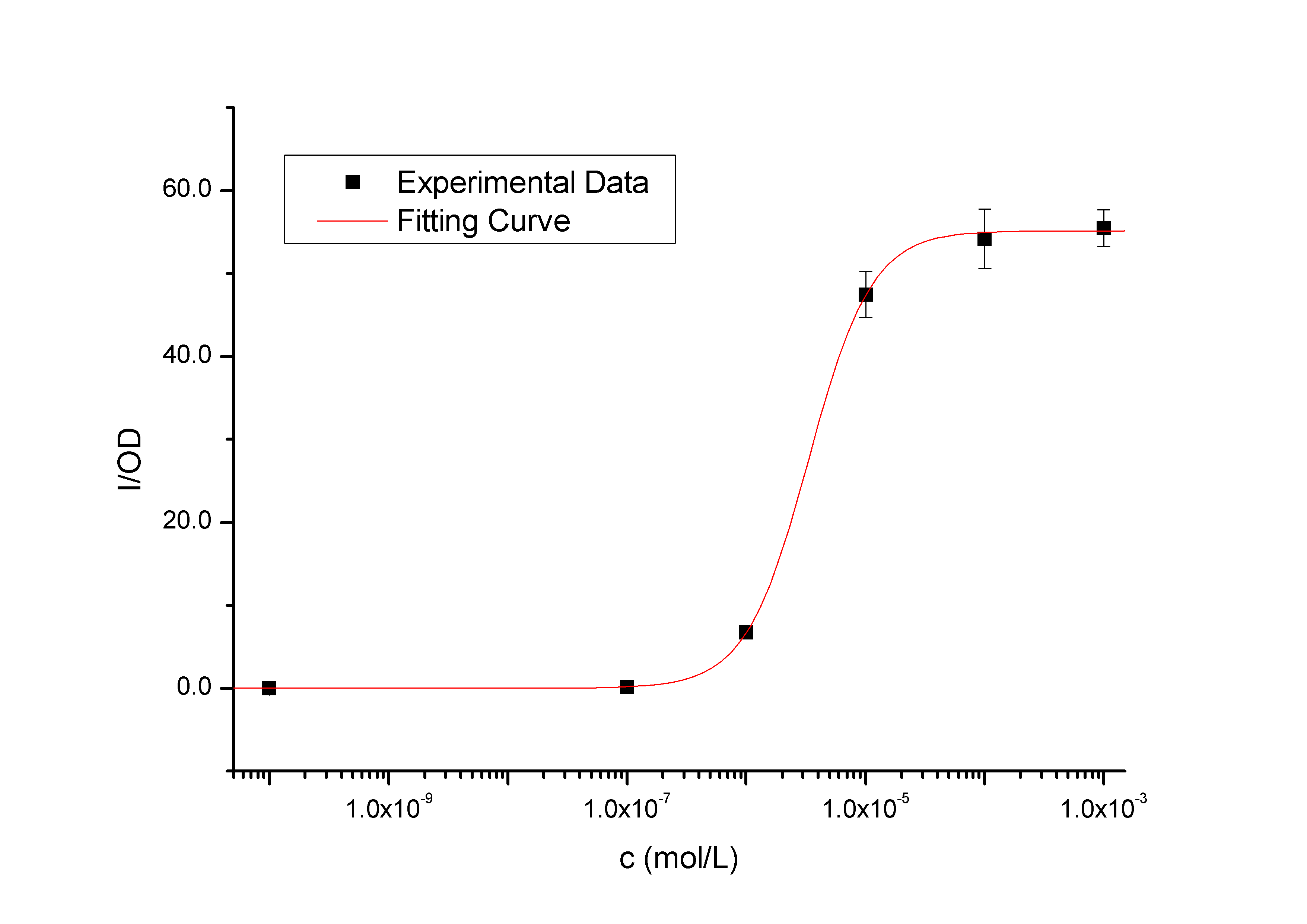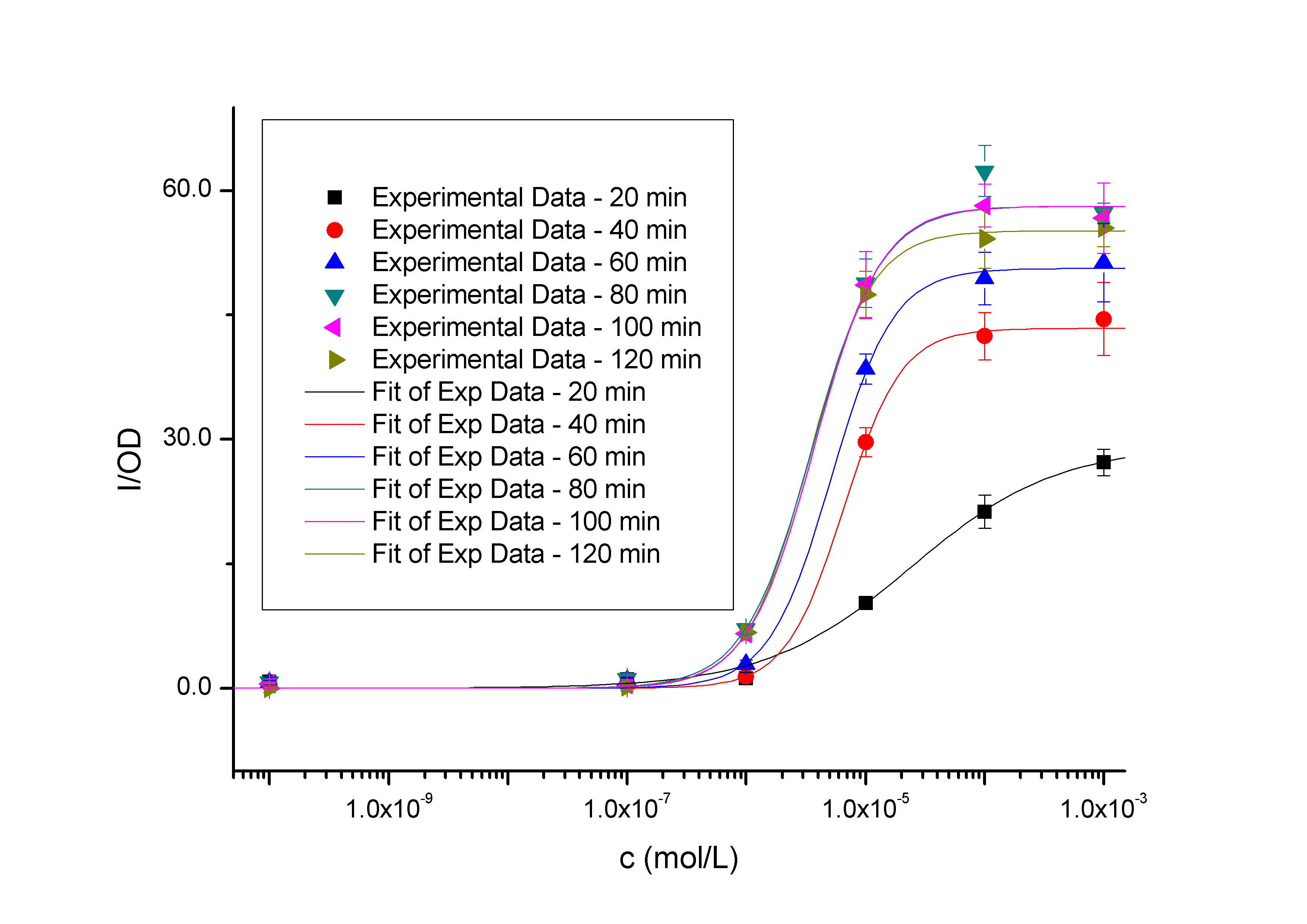Team:PKU Beijing/Parts Characterization/BBa K228004/Transfer
From 2009.igem.org
Spring zhq (Talk | contribs) (→Data) |
Spring zhq (Talk | contribs) (→Protocol) |
||
| Line 40: | Line 40: | ||
7. Use spectrophotometer to test the OD600 value of the left 100 ul of bacteria resuspention. <br> | 7. Use spectrophotometer to test the OD600 value of the left 100 ul of bacteria resuspention. <br> | ||
8. We converted the OD600 value into the concentration of cells (/ml). The equation is OD600 1.0=5*10^8 cells/ml. Then we normalize the GFP fluorescence by the OD600 values, to obtain the ratio of GFP fluorescence to the OD600 values. The mean for each concentration-time group was then averaged across 6 replicates to obtain a population mean. <br> | 8. We converted the OD600 value into the concentration of cells (/ml). The equation is OD600 1.0=5*10^8 cells/ml. Then we normalize the GFP fluorescence by the OD600 values, to obtain the ratio of GFP fluorescence to the OD600 values. The mean for each concentration-time group was then averaged across 6 replicates to obtain a population mean. <br> | ||
| - | 9. The transfer function in Figure 1 is the 120 min time-slice from the surface | + | 9. The transfer function in Figure 1 is the 120 min time-slice from the time and dose dependent input-output surface. The data points represent the mean of 6 individual measurements. The corresponding error bars denote the 95% confidence interval in the mean of the independent measurements. <br> |
10. In Figure 2, the level of induction triggered by the same concentration of inducer (of which concentrations are higher than 10^-7 mol/L, causing concentration of 10^-10 mol/L group has no significantly positive differences with the blank group) will be enhanced as the induction time extended, so it is the same with the saturation of fluorescence, as expected. <br> | 10. In Figure 2, the level of induction triggered by the same concentration of inducer (of which concentrations are higher than 10^-7 mol/L, causing concentration of 10^-10 mol/L group has no significantly positive differences with the blank group) will be enhanced as the induction time extended, so it is the same with the saturation of fluorescence, as expected. <br> | ||
11. To estimate parameters that characterize the measured transfer functions, we used least squares estimation to fit a simple model to the data. Hill equations derived from simple biochemical equations describe the data well (Table 1). Pmax is the maximum output level, K is the switch point, and n is the hill coefficient describing the steepness of the transition from low output to high output. | 11. To estimate parameters that characterize the measured transfer functions, we used least squares estimation to fit a simple model to the data. Hill equations derived from simple biochemical equations describe the data well (Table 1). Pmax is the maximum output level, K is the switch point, and n is the hill coefficient describing the steepness of the transition from low output to high output. | ||
Revision as of 12:12, 19 October 2009
|
||||||||||||||||||||||||||||||||||||||||
|
||||||||||||||||||||||||||||||||||||||||
 "
"


